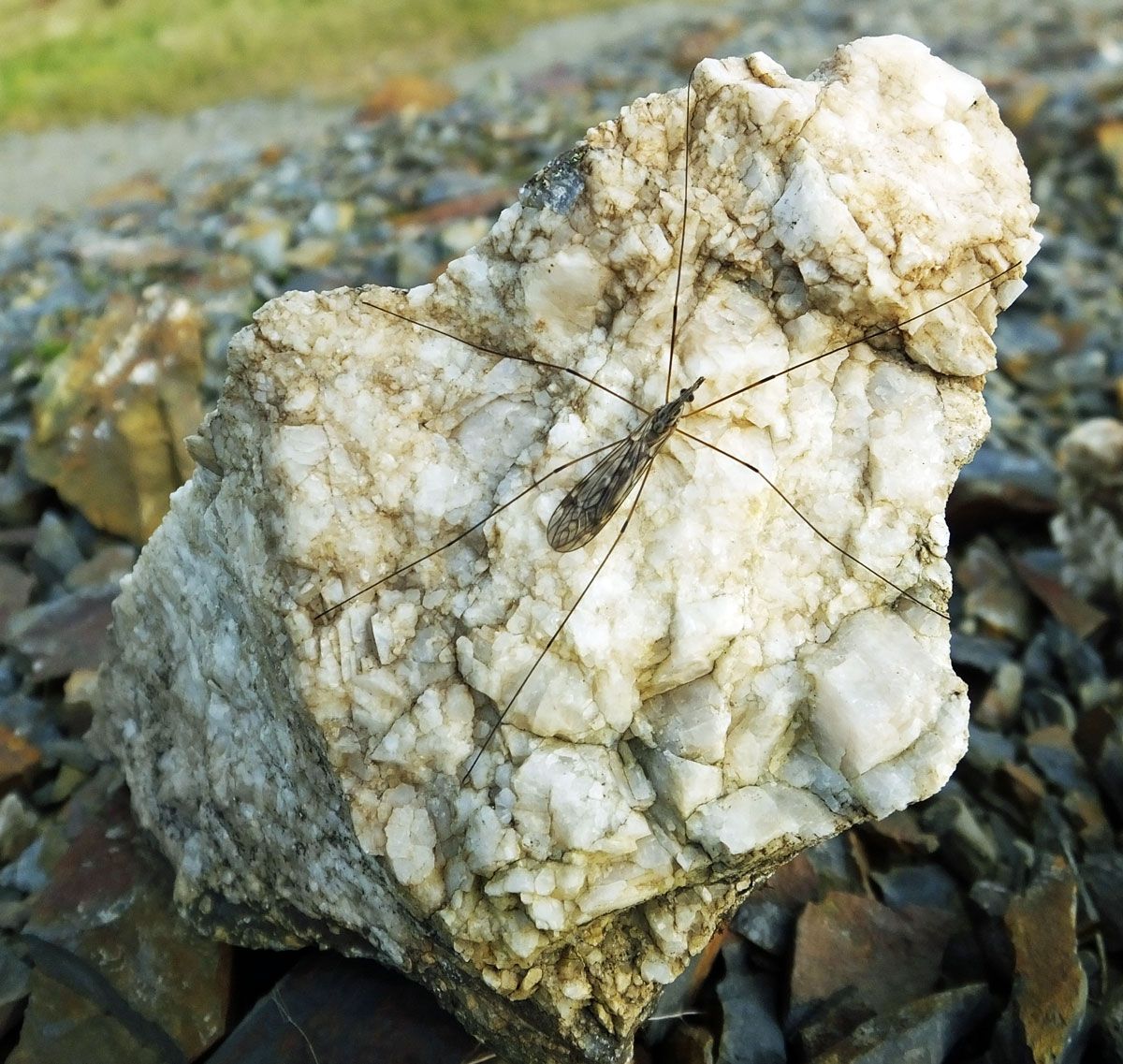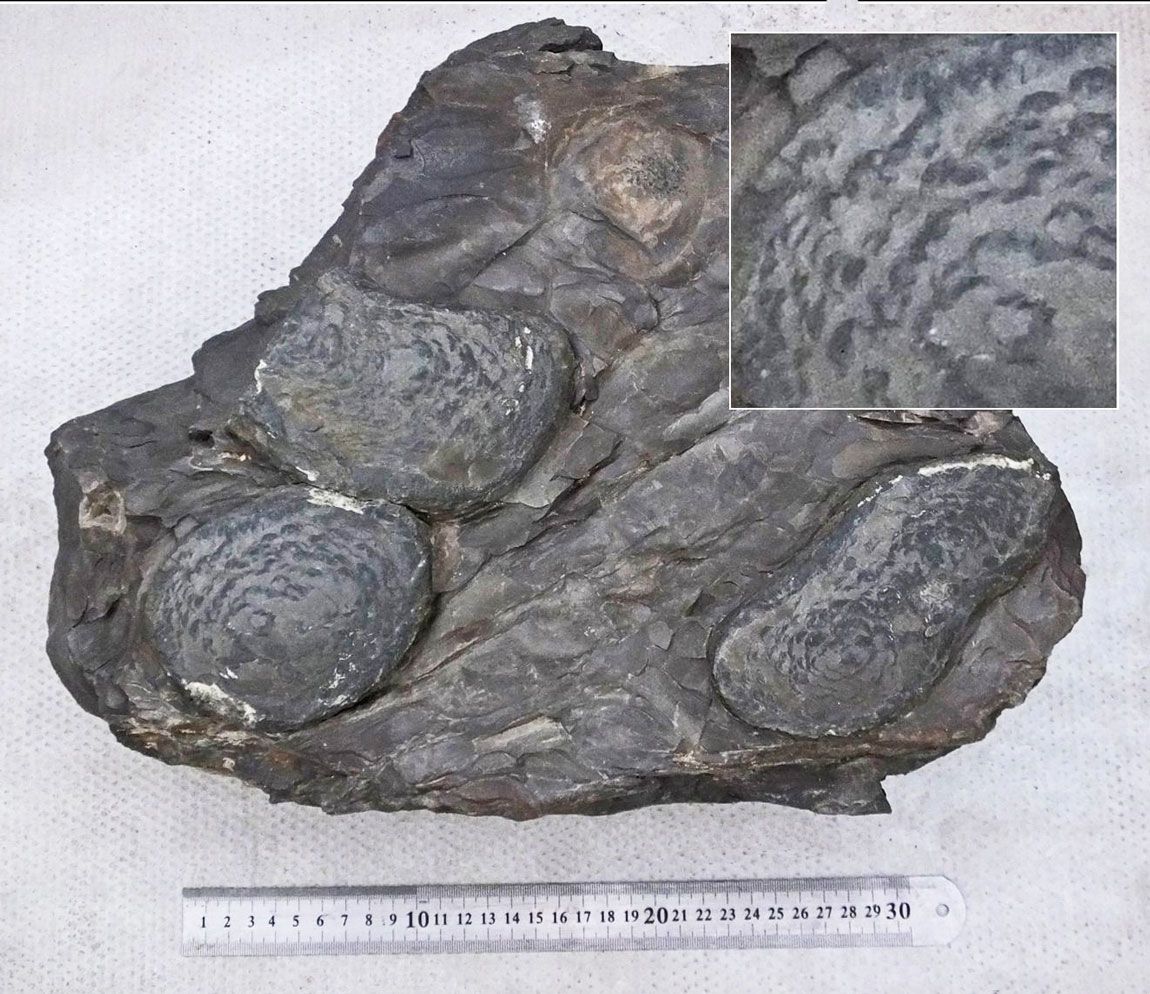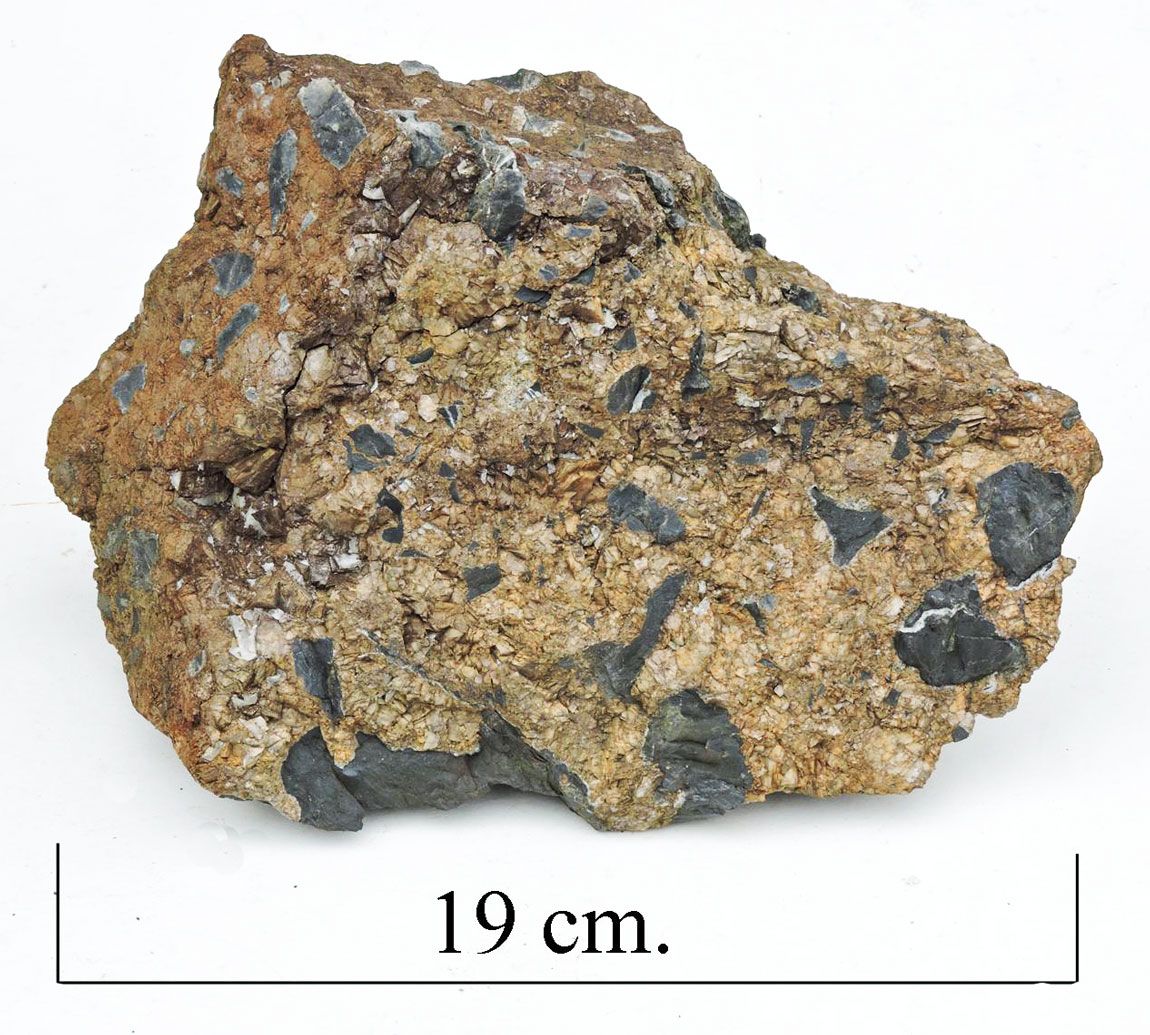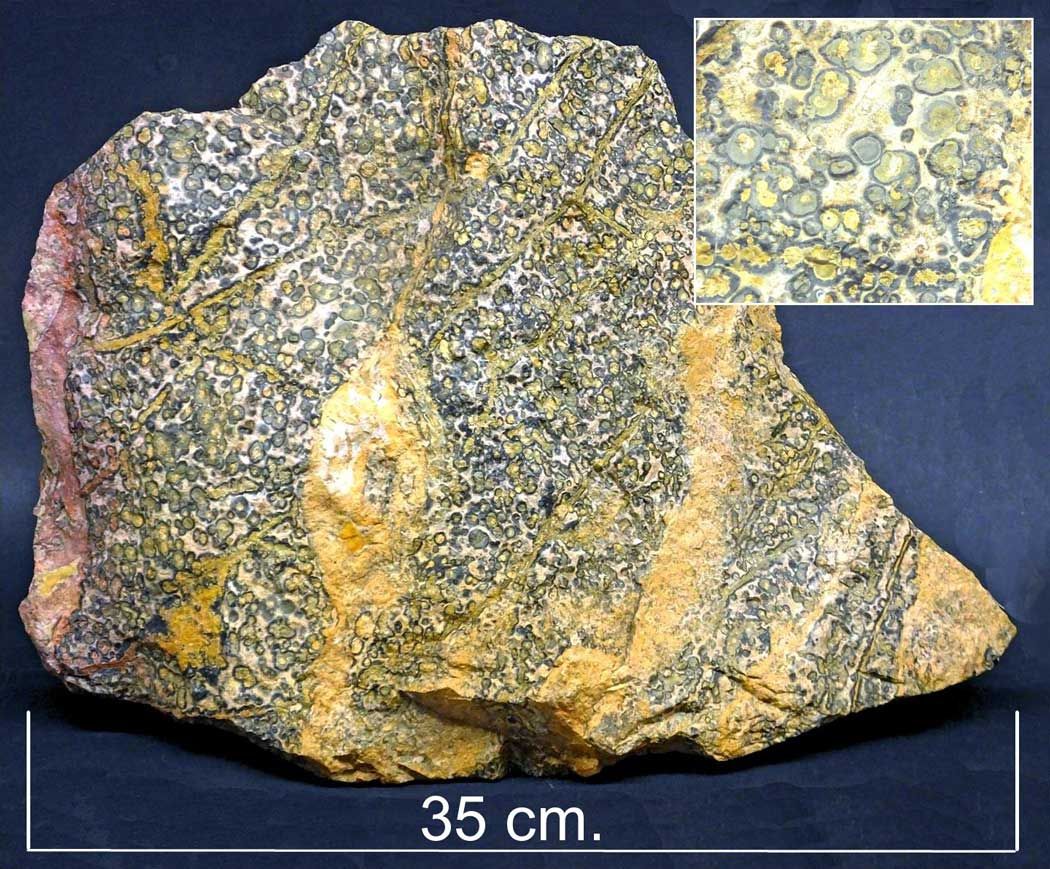
My Rock
This is my rock. You can't have it!!

This is my rock. You can't have it!!

Concretions are a common occurrence in the Silurian mudstones of central Wales. The concretions in this slab of mudstone were collected from the Waen Trefeglwys, here in mid -Wales. They are of the type known as "cone in cone". A cross section would show cone like structures growing from opposite sides, and interlocking. The inset picture is to illustrate the tops of the cones. These concretions, because of their calcite content, and construction, are very hard, and resistant to weathering, and for this reason are littered on shorelines, and in stream beds, long after the host mudrock has disintegrated. See Tony's article on cocretions in Silurian magazine No. 1 which is on this website.

This specimen of breccia is from Henfwlch mine, Nant y Moch reservoir, Ceredigion. Angular clasts of wall rock are embedded in a matrix mainly composed of a mineral in the Ankerite/Dolomite series. The brown colour suggests that it is a manesium rich/iron defictent ankerite which is also referred to as ferroan dolomite. This type of specimen is plentiful at this site.

In highly silicified deposits of rhyolitic tuff, quartz and feldspar crystallise in a manner which creates the orbicular inclusions. This specimen was described on aquisition as "leopardskin jasper ", but on further investigation I discovered that leopardskin or orbicular jasper, is in reality orbicular rhyolite, which is an extrusive igneous rock. Because it is used in jewellery, it may be that jasper sounds better than rhyolite, when being advertised by traders. This specimen is from Aquas Calientes, Chihuahua, Mexico, and should really be listed in my rocks collection, rather than as a mineral.